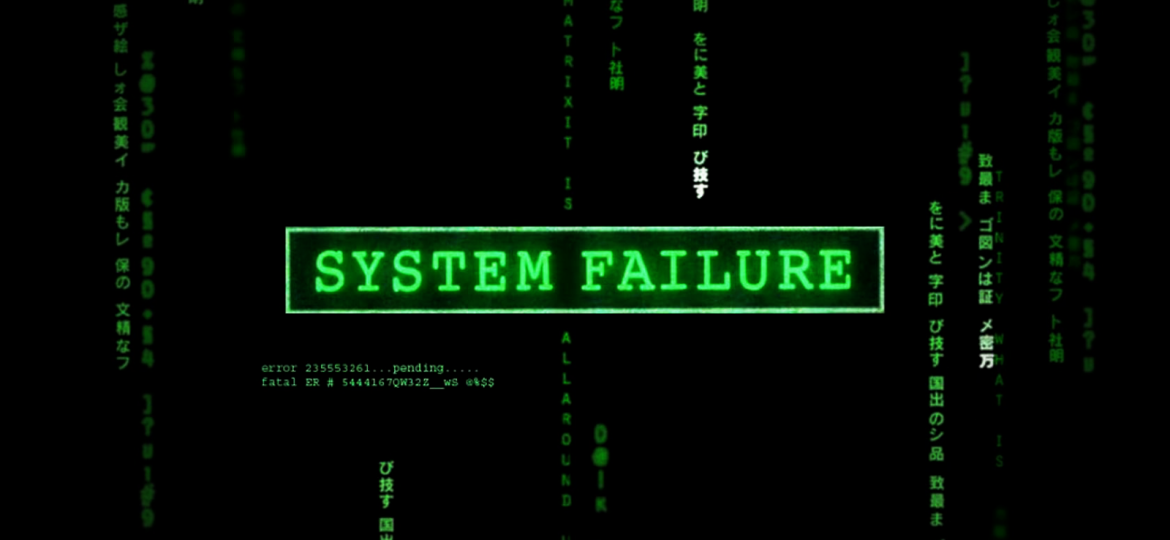
10 Cybersecurity Statistics and Trends for 2023
According to cybersecurity statistics, because all businesses, no matter how big or small, corporations, organisations, and even governments now rely on computer networks to handle their daily operations, cybersecurity has become a top priority to prevent data breaches from various cyber-attacks or any unauthorised access. It goes without saying that cybersecurity is an increasing concern for both businesses and individuals. With the rise of cybercrime, it is more crucial than ever to stay up to date on the most recent cybersecurity statistics and research.
Cybercrime costr organisations more than $6 trillion by 2022, according to the most recent cybersecurity figures and research. That is a startling figure that is only expected to rise as criminals become more skilled in their attacks. This should come as no surprise; we’ve all read about ransomware attacks, operations disruption, and security breaches. What’s more concerning is that many of these attacks could have been avoided if effective cybersecurity measures had been in place. That’s why it’s critical to stay current on cybersecurity statistics and results; information is power when it comes to safeguarding oneself against cybercrime.
Cybersecurity Global Statistics in 2023
- The COVID-19 Pandemic caused a 600% rise in cybercrime.
- Cybercrime is expected to cost the world $10.5 trillion per year by 2025.
- Cybercrime costs the world $6 trillion per year.
- Costs linked with cybercrime amount to one percent of worldwide GDP.
- A malware attack can cost a company more than $2.5 million, not including the time it takes to stop it.
- Ransomware will be 65 times more dangerous in 2023 than it was in 2015.
- There are 30 million SMBs in the United States, and between 2018 and 2020, more than 66% of all SMBs suffered at least one incident.
- According to 30% of small firms, the most serious cyber threat is phishing.
- 83% of small and medium-sized firms are ill-equipped to recover from financial losses caused by a cyberattack.
- Despite being aware of the risk and the likelihood of not being able to recover from an attack, 91% of small firms do not purchase cyber liability insurance.
- About 14% of small businesses say they have an extremely effective cybersecurity posture.
Cybersecurity Trends 2023
1) Rise of Automotive Hacking
2. Zero-trust Architecture
Remote working challenges and security weaknesses must be handled with an appropriate security architecture designed for dynamic and fragmented work environments. The Zero-Trust Architecture provides this security by centralising all administrative control over all systems and devices in a single central hub.
Context-Aware Access, exhaustive logs of every device on the network, as well as strong user identities for those who use them, multiple levels of authentication, real-time health and status reports on devices, policies that reflect the value of data and services, and a general mistrust of all local network security are key components of zero-trust.
3. Potential of Artificial Intelligence (AI)
4. Cyber-crime-as-a-service
Cyberattack opportunities and financial potential are increasing in tandem with its popularity. Because of cybercrime-as-a-service, attackers can now rent or buy the tools they need to carry out a dark web attack (CaaS). Less effort is expended in designing the tools, freeing up time to plan a successful attack and investigate the businesses most likely to pay the ransom. Criminals can use software like TOR to construct safe havens while carrying out their transactions.
Cloned credit cards, PayPal accounts, fake documents, compromised social media accounts, ransomware, and DDoS attacks can all be purchased for less than $100. DDoS (Denial of Service) and Ransomware-as-a-Service are two well-known examples of CaaS. The latter operates on a subscription-based business model in which developers distribute tested ransomware, affiliates sign up to use the ransomware, and each successful extortion results in a percentage commission. It also aids in the protection of the ransomware developers’ personal information. DDoS-as-a-Service aims to knock down a website’s server by flooding it with tens of thousands of requests per second unless a ransom is paid.
5. IoT with 5G Network
The Internet of Things will usher in a new era of interconnection with the development and deployment of 5G networks (IoT). What Exactly Is the Internet of Things (IoT), and Why Is It Important? can be found here. Furthermore, because of the interconnected nature of the devices, they are subject to outside interference, attacks, or undetected software vulnerabilities. Even Chrome, the most popular browser in the world and one that Google promotes, was shown to have serious flaws.
Because 5G architecture is still in its early stages, extensive research is required to uncover weaknesses and increase the system’s protections against external attack. We are unaware of any network assaults that may occur on the 5G network at any moment. To avoid data breaches, manufacturers must exercise extreme caution when developing innovative 5G hardware and software.
6. Malware Automation
Malware automation works on the idea that with enough time and the right tools, any defense can be defeated. With strong machine-learning algorithms, cybercriminals can try their attacks repeatedly until they surpass defenses. As a result, many ransomware activities go undiscovered, and their capacity for carrying out attacks has increased by thousands. Furthermore, polymorphic malware contains code that allows it to evolve over time in order to remain undetected once those defenses are defeated.
7. Targeted Ransomware
Targeted ransomware is a type of ransomware attack that specifically targets a particular individual or organization. Unlike non-targeted ransomware attacks that randomly infect any computer system they come across, targeted attacks are more sophisticated and typically involve extensive reconnaissance to identify the target’s vulnerabilities and valuable data.
The attackers behind targeted ransomware often use a variety of methods to gain access to the target’s systems, such as spear-phishing emails or exploiting vulnerabilities in software or hardware. Once they have gained access, they encrypt the victim’s data and demand payment in exchange for the decryption key.
8. Social Engineering
Social engineering is a technique used by cybercriminals to trick individuals or organizations into divulging sensitive information or performing actions that could compromise their security. Social engineering attacks can take many forms, including phishing emails, phone calls, or even physical visits to a target’s premises.
Social engineering attacks often exploit human psychology and emotions, such as fear, greed, or trust. For example, a phishing email might be designed to look like it is from a legitimate source, such as a bank or government agency, and will typically include a call to action that urges the recipient to click a link or download an attachment. If the recipient falls for the scam and provides their login credentials, the attacker can use this information to access the victim’s sensitive information or even their entire system.
Effective social engineering attacks can be difficult to detect and defend against, as they often involve manipulation of human behavior rather than technical vulnerabilities. To protect against social engineering attacks, it is essential to educate employees on the risks and warning signs of such attacks, such as suspicious emails or requests for sensitive information. Companies should also implement security protocols and procedures, such as two-factor authentication and access controls, to reduce the risk of successful attacks.
9. Cloud Security
Cloud security is a critical aspect of cybersecurity, as more and more organizations move their data and applications to the cloud. Cloud computing provides many benefits, such as scalability, cost-effectiveness, and ease of access. However, it also presents unique security challenges that organizations must address to ensure the protection of their sensitive data.
One of the primary concerns in cloud security is the risk of unauthorized access. Cloud services are often accessed via the internet, and the data stored in the cloud is vulnerable to attacks from hackers. To mitigate this risk, cloud service providers implement various security measures such as access controls, encryption, and authentication mechanisms.
Another key consideration in cloud security is data privacy. Cloud providers must comply with various data protection laws and regulations to ensure that customer data is adequately protected. Customers should also implement their own data security measures, such as encryption, to further protect their data.
Finally, cloud security requires ongoing monitoring and risk management. Cloud environments are dynamic and constantly changing, and new security threats can emerge at any time. Regular security audits and vulnerability assessments are essential to identifying and mitigating these risks.
10. Informational Warfare
Information warfare is closely related to cyber security, as many of the tactics used in information warfare involve the use of technology and the internet. Cyber security is concerned with protecting computer systems and networks from unauthorized access, theft, and damage, while information warfare is focused on using information and communication technologies to gain an advantage in a conflict.
One common tactic used in information warfare is the deployment of cyber attacks against an opponent’s infrastructure. This can include hacking into computer systems, stealing sensitive data, or disrupting critical networks through distributed denial-of-service (DDoS) attacks. These types of cyber attacks can cause significant damage and disrupt the normal functioning of targeted organizations or nations.
Disinformation and propaganda are other tactics used in information warfare that can have a significant impact on cyber security. By spreading false or misleading information, attackers can manipulate public opinion, create confusion, or even cause panic. This can lead to individuals or organizations making decisions based on inaccurate information, which can further compromise their security.
To defend against information warfare attacks, it is important to have robust cyber security measures in place. This includes implementing strong authentication and access controls, regularly updating and patching software, and implementing effective network monitoring and incident response processes.
It is also essential to build resilience to disinformation and propaganda through media literacy and critical thinking education, and by encouraging the use of trusted news sources and fact-checking tools. Developing international norms and regulations for the use of information and communication technologies in conflict can also help prevent the escalation of information warfare.


